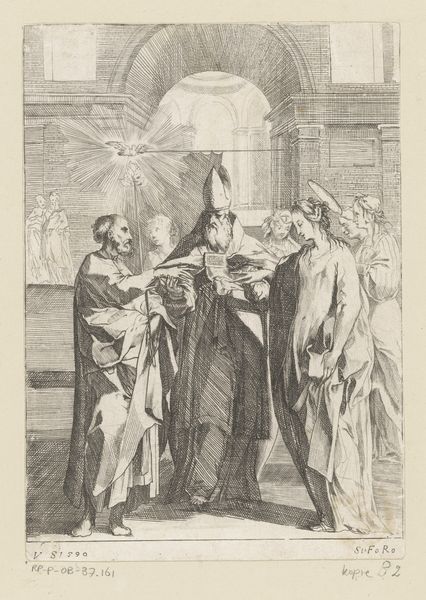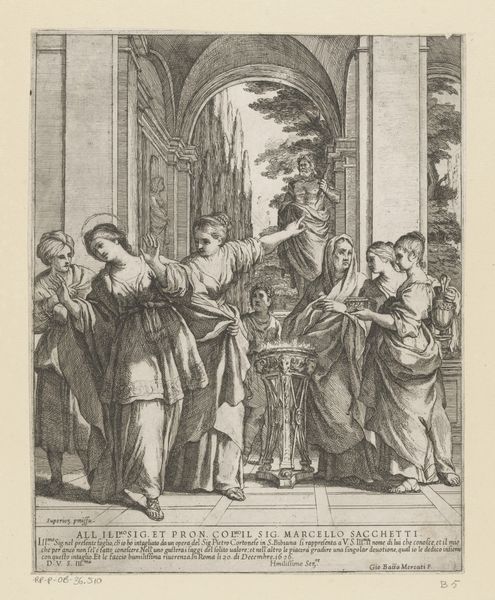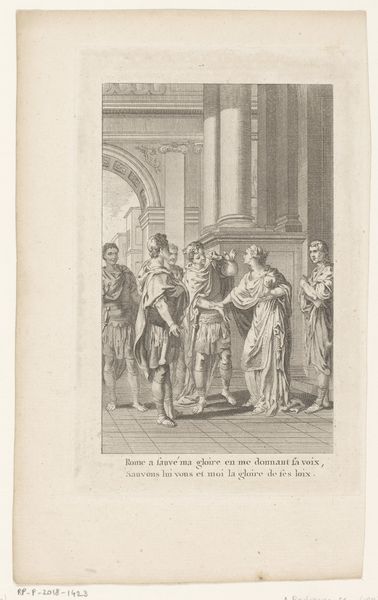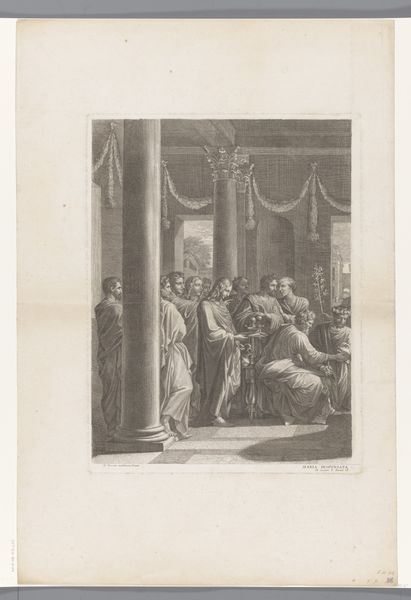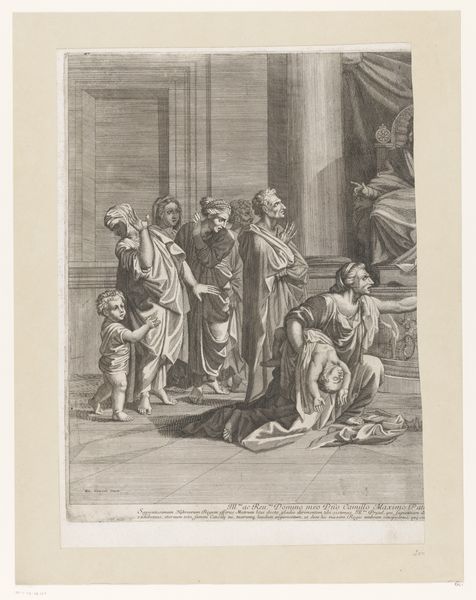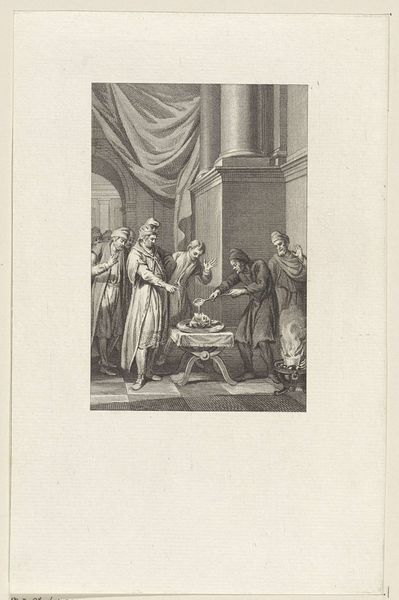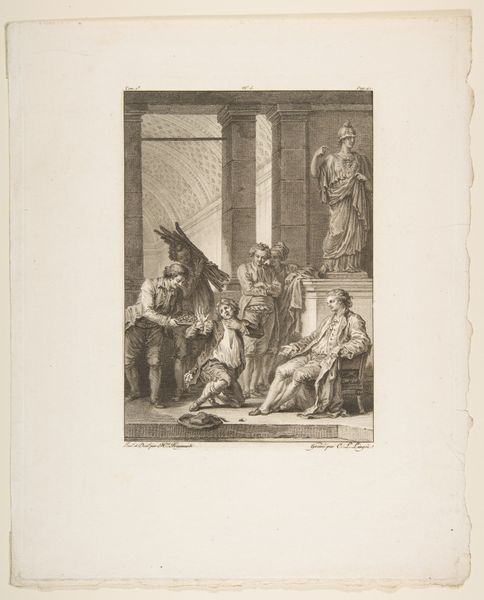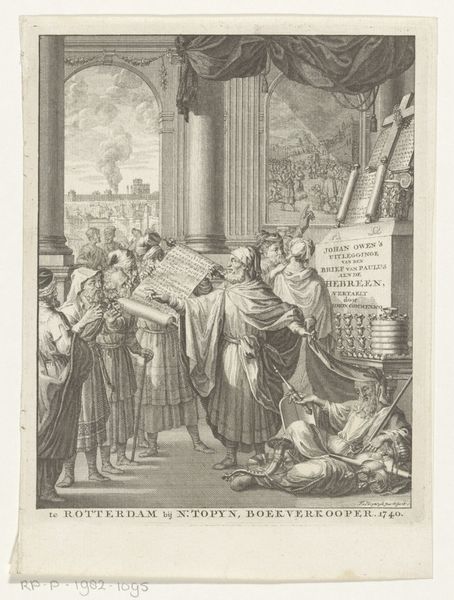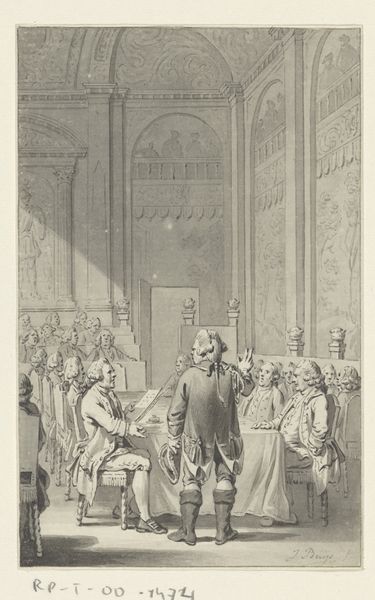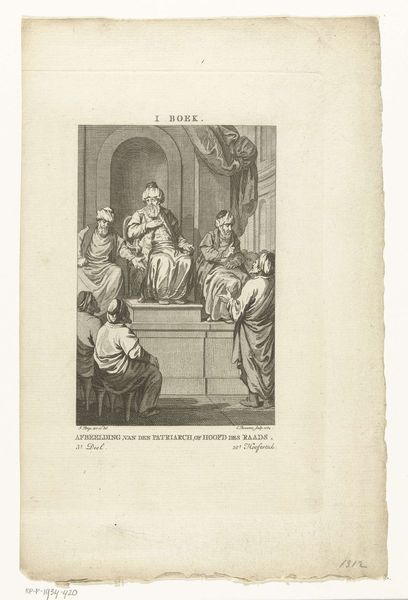
print, engraving
# print
#
old engraving style
#
figuration
#
line
#
history-painting
#
italian-renaissance
#
engraving
Dimensions: width 211 mm, height 155 mm
Copyright: Rijks Museum: Open Domain
Curator: This is "The Marriage of Mary and Joseph," an engraving from 1590 by Ventura Salimbeni, found here in the Rijksmuseum collection. What's your initial take on this scene? Editor: My immediate reaction is that there’s a sense of theatrical staging here, everyone seems aware of the audience even though this depicts such an intimate scene. I wonder who the artwork's target audience may have been? Curator: That's perceptive. The drama is intentional, reflecting the Counter-Reformation's emphasis on emotional connection with religious narratives. Symbols abound: The dove overhead represents the Holy Spirit, ensuring we know this union has divine endorsement. And consider Mary's downcast eyes... Editor: I can see a tension that results from that divine endorsement: the gaze creates this strange push and pull where her consent, her agency in this whole transaction, is secondary, and, as the story goes, God ultimately claims primary claim over her body. Curator: Indeed. The artist balances the human drama with divine symbolism. The clothing, the architecture, they ground the sacred in the everyday world. Each figure is meticulously rendered with those clean lines, to convey a sense of importance but also spiritual significance. Editor: Although in reality, we know very little about this particular part of her life! How might the narrative itself and its visual representations uphold or resist certain cultural expectations around marriage, then and now? Curator: Precisely the types of question we want viewers to engage with. Even today, images like this have power, and we see iterations of the ‘perfect’ sacred bond—and that visual is rarely questioned, even when the origins or context is complex, as is the case here. Editor: Right. A sacred union with earthly implications and very gendered rules of engagement. These symbolic renderings, although crafted centuries ago, perpetuate ideas about roles, rights, and religious responsibilities within heterosexual norms and assumptions that exclude queer and other marginalized individuals from certain narratives of faith and inclusion. Curator: Thank you. It has made me contemplate what aspects of continuity and reinvention of traditional representations mean to diverse modern audiences today. Editor: Agreed, thinking about religious figures like Mary allows a space for unpacking the nuances of iconography and representation, and their role in perpetuating societal biases and norms over time.
Comments
No comments
Be the first to comment and join the conversation on the ultimate creative platform.
